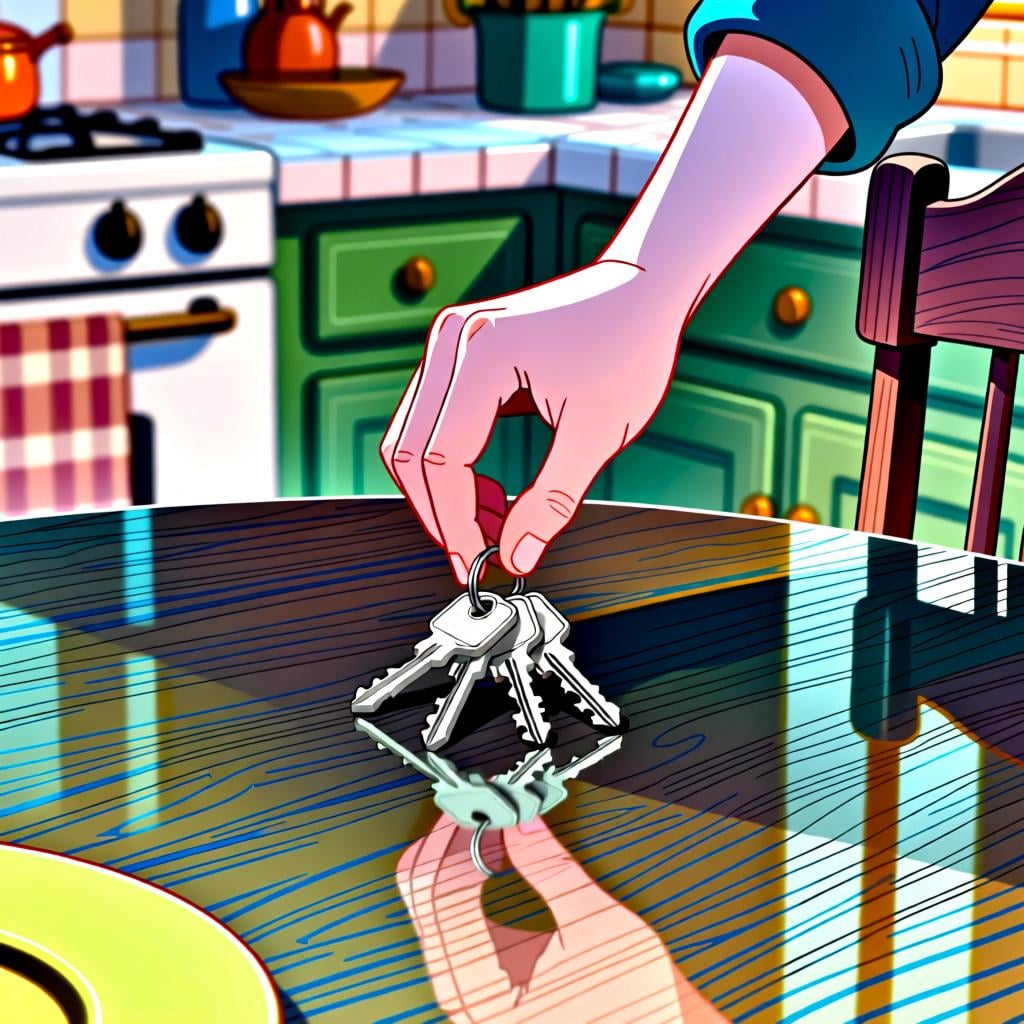deja
/DEH-hah/
leaves (behind)

The most common meaning of deja (she/he leaves) is to place an object somewhere and leave it behind.
deja(Verb)
leaves (behind)
?placing an object somewhere
,puts
?setting an object down
forgets
?unintentionally leaving something
📝 In Action
Ella siempre deja sus llaves en la mesa.
A1She always leaves her keys on the table.
Mi hermano deja la toalla mojada en la cama.
A2My brother leaves the wet towel on the bed.
¿Usted deja un mensaje después del tono?
A2Do you (formal) leave a message after the tone?
💡 Grammar Points
What 'deja' is
'Deja' is a form of the verb 'dejar'. It's used for 'he', 'she', 'it', or the formal 'you' (usted). For example, 'El cartero deja el correo' means 'The mailman leaves the mail.'
❌ Common Pitfalls
'Dejar' vs. 'Salir'
Mistake: "Using 'deja' for a person leaving a place. For example: *'Él deja la casa a las 8.'*"
Correction: Use 'sale' for people leaving: 'Él sale de la casa a las 8.' Use 'deja' for leaving *objects* behind: 'Él deja su mochila en casa.'
⭐ Usage Tips
A Versatile Word
Think of this meaning as 'to leave something in a state or place.' It can be physical, like leaving keys, or less direct, like leaving a good impression ('deja una buena impresión').

The second key meaning of deja (she/he lets/allows) is to grant permission or enable an action.
deja(Verb)
lets
?permission, allowing an action
,allows
?giving permission
causes
?as in 'it leaves me speechless'
📝 In Action
Mi jefe no me deja salir temprano.
A2My boss doesn't let me leave early.
La lluvia no deja que los niños jueguen afuera.
B1The rain doesn't let the children play outside.
Esta película siempre me deja pensando.
B1This movie always leaves me thinking.
💡 Grammar Points
How to Say 'Let Someone Do Something'
To talk about letting someone do an action, you'll often see this pattern: deja + que + a person + a verb in a special form. For example, 'Ella deja que su hijo coma postre' (She lets her son eat dessert).
A Simpler Pattern
When the person being 'let' is the object, you can use a simpler structure: deja + the basic form of the second verb. For instance, 'Él me deja usar su coche' (He lets me use his car).

¡Deja! is the informal command form used to tell someone (or something) to leave an object alone or stop an action.
deja(Verb (Command Form))
Leave!
?command to leave an object
,Let!
?command to allow something
,Stop!
?command to cease an action
📝 In Action
¡Deja eso en el suelo!
A2Leave that on the floor!
Por favor, deja de hacer tanto ruido.
A2Please, stop making so much noise.
¡Deja que yo lo intente!
B1Let me try it!
💡 Grammar Points
Giving Commands
'Deja' is the command form you use when talking to one person you know well (the 'tú' form). It's a direct instruction. For example, telling a friend: 'Deja tu abrigo aquí' (Leave your coat here).
❌ Common Pitfalls
Using 'Deja' with 'Usted'
Mistake: "Saying 'Deja' to someone you should be formal with, like a boss or an older stranger."
Correction: For formal commands (usted), the form changes to 'deje'. For example: 'Señor, deje su maleta aquí, por favor.' (Sir, leave your suitcase here, please).
⭐ Usage Tips
Telling Someone to Stop
A super useful phrase is 'deja de' + a verb. It means 'stop doing' that action. For example, '¡Deja de quejarte!' means 'Stop complaining!'
🔄 Conjugations
indicative
present
imperfect
preterite
subjunctive
present
imperfect
✏️ Quick Practice
💡 Quick Quiz: deja
Question 1 of 2
Which sentence correctly uses 'deja' to mean 'lets' or 'allows'?
📚 More Resources
Frequently Asked Questions
What's the difference between 'deja' and 'deje'?
'Deja' is the command you give to someone you call 'tú' (informal 'you'). 'Deje' is the command you give to someone you call 'usted' (formal 'you'). So you'd say '¡Deja eso!' to a friend, but 'Deje eso, por favor' to a stranger.
Can 'deja' mean to break up with someone?
Yes, absolutely. The verb 'dejar a alguien' means 'to leave someone' or 'to break up with someone'. So, 'Él deja a su novia' means 'He is breaking up with his girlfriend'.